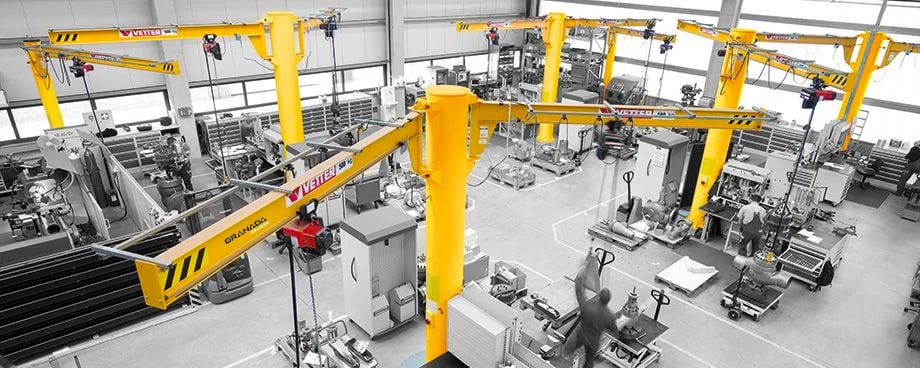Swing jib cranes are not just another piece of equipment in industrial settings; they are indispensable tools that significantly enhance precision and efficiency in lifting operations. These cranes feature a horizontal arm (jib) that pivots around a fixed point, providing a wide range of motion and allowing operators to precisely position loads with ease. Let’s delve into why swing jib cranes are vital in various industries, particularly in optimising workstation ergonomics and enhancing lifting accuracy.
Precision and Maneuverability
At the heart of their design, swing jib cranes excel in providing precise lifting capabilities. The pivotal jib arm enables smooth movement across a designated area, allowing for accurate placement of heavy components or materials. This capability is crucial in industries where meticulous positioning is required, such as automotive assembly lines.
In automotive manufacturing, for instance, swing jib cranes are strategically placed to facilitate the seamless installation of engines, chassis components, and other vital parts. The ability to rotate and extend the jib arm ensures that operators can reach difficult-to-access areas within the workspace, minimising the risk of damage to both the equipment and the finished product.
Ergonomics and Workplace Efficiency
Beyond precision, swing jib cranes play a pivotal role in optimising workstation ergonomics. By eliminating manual lifting and repetitive strain injuries, these cranes enhance workplace safety and productivity. Operators can effortlessly maneuver heavy loads, reducing fatigue and improving overall efficiency. This ergonomic benefit is particularly valuable in industries where worker health and safety are paramount concerns.
Real-Life Applications
Real-life examples underscore the versatility and utility of swing jib cranes across different sectors:
- Automotive Industry: In automotive plants, swing jib cranes are integral to assembly processes. They aid in lifting engines, transmissions, and other heavy components, ensuring precise alignment and reducing assembly time.
- Warehousing and Logistics: Swing jib cranes streamline warehouse operations by facilitating the loading and unloading of pallets and containers. Their compact design and flexible jib arm make them ideal for handling diverse materials in confined spaces.
- Construction Sites: Swing jib cranes are also used in construction for lifting and positioning building materials such as steel beams and concrete panels. Their mobility and precise control help construction crews maintain project timelines and safety standards.
Conclusion
Swing jib cranes stand out as versatile solutions that enhance precision, improve workplace ergonomics, and boost overall efficiency across industries. Whether in automotive manufacturing, logistics, or construction, these cranes continue to play a pivotal role in modernising lifting operations. Their ability to combine robust lifting capabilities with ergonomic design makes them indispensable tools for businesses aiming to optimise their operational workflows and ensure safety in their workplaces.




